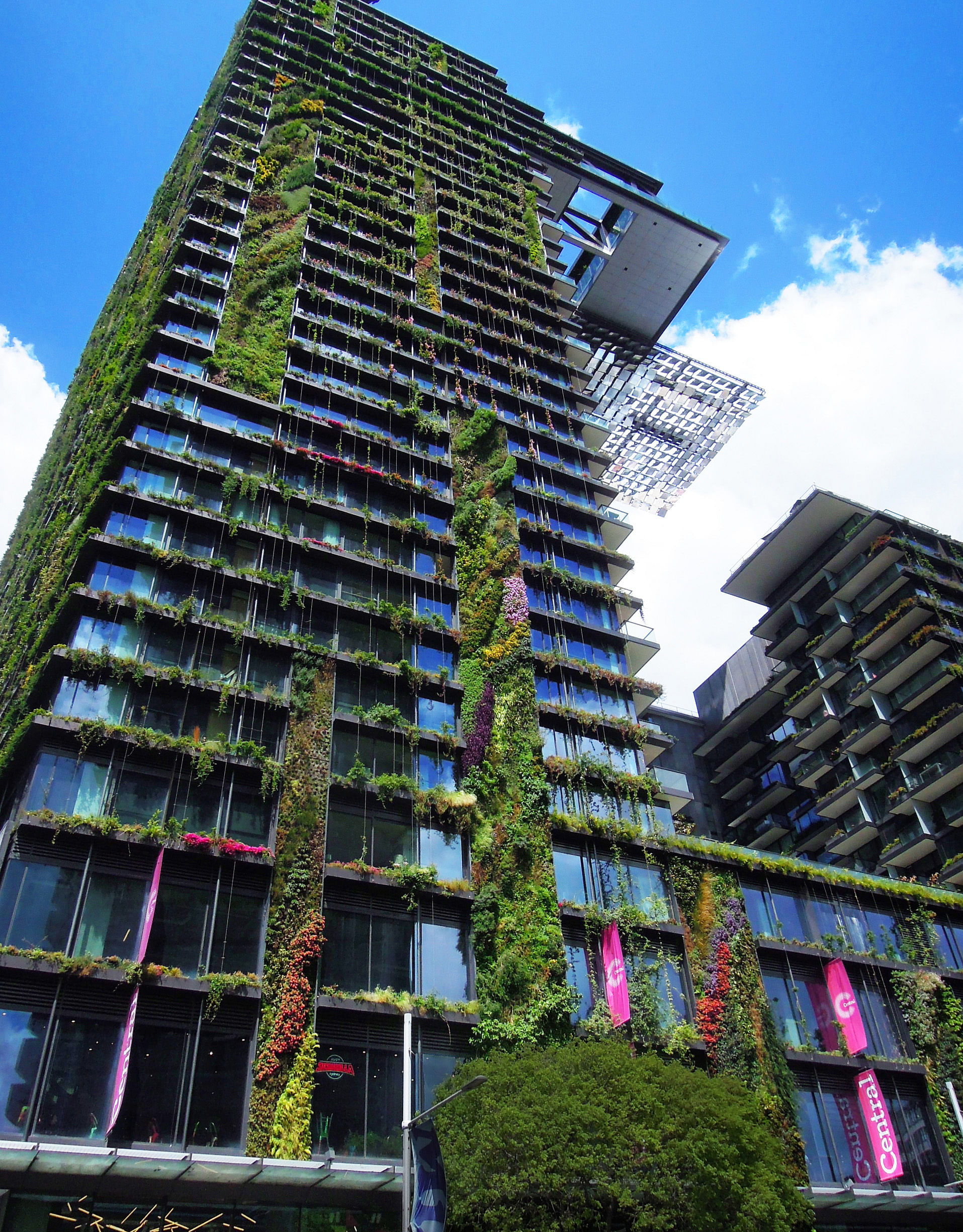Patrick Blanc, creator of vertical gardens, says many get it wrong
Choosing the right plants and creating the right growing conditions are essential for lush vertical gardens, says Frenchman Patrick Blanc, a pioneer in the field of creating such plots



Plants have been creeping steadily onto the facades of buildings or hanging off walls in homes. So ubiquitous is this eco design trend that its name, "the vertical garden", has entered into common parlance.
While these green walls may be all the rage now, the man who popularised the space-saving feature says many people are doing it wrong.
You could call Frenchman Patrick Blanc, 63, a scientist at the French National Center for Scientific Research, a senior statesman for the vertical garden, having turned his childhood experiences of wandering through French woodlands into spectacular man-made green walls.
Now the concept has been so widely adopted that it sounds like a no-brainer in urban design.
To save space, shove plants onto a wall and let them grow.

There are many types of vertical gardens, ranging from those with irrigation systems to simple planter pockets filled with soil and hanging off the wall.
Everything looks great and the only direction for the plants to grow is up, right? Not really.
Dr Blanc says that common mistakes in green walls include choosing the wrong species of plants or having too few varieties, which leaves the wall vulnerable.
Even if the right species were picked, many owners of green walls do not know how to care for them, which leads to the plants dying.
He tells The Straits Times: "People tell me 'Yes, vertical gardens are beautiful, but after one year, everything is dead.' You've got to know plants and their habits, which ones you can prune and when to prune.
"Plants need to grow in harmony. Vertical gardens can be built to last for many years."
Dr Blanc, who first came to Singapore as a "poor" student in 1976 and now stops over here at least twice a year, was in town two weeks ago to give a talk about how to recreate plant-growing conditions in green walls so that they are similar to nature.
The talk was held at the HortPark and organised by the Institute of Parks and Recreation Singapore and the National Parks Board.
His key point was that to keep plants growing well, they should be grown as close to their natural state as possible.
His industry experience is solid, having worked on hundreds of vertical gardens in homes, public buildings and malls all over the world.

Some of his highlights include the 103m-long "rainforest chandelier" in the EmQuartier mall in Bangkok, Thailand; and One Central Park in Sydney, where he used 250 species of Australian flowers and plants to beautify the Jean Nouvel-designed building.
In Singapore, he did a colourful vertical garden called Rainforest Rhapsody at 6 Battery Road, which features the Ludisia discolor, a plant with dark green leaves and red lines, and Philodendron cf lacerum, which has red leaves.
In 2011, he discovered a new Begonia species, that was then named after him.
His botanical expertise is matched by his style. His shoulder- length hair is green - he says he dyes it himself every 10 days or so. (That is why he has, literally, green fingers.)
For this interview, he is wearing a shirt with a leaf print. Most of his wardrobe, he says, consist of green shirts or those with plant motifs.
He first coloured his hair 31 years ago to complement his partner, French actor and singer Pascal Heni, who dyed his hair blue at that time. Heni, 53, changed his look a week later, but Dr Blanc kept the green locks.
So what does this greener- than-green expert think about vertical gardens in Singapore?
They are hit and miss, he says.
He singles out the Parkroyal on Pickering for praise. The hotel, which was landscaped by Tierra Design, an award-winning multi- disciplinary design practice here, features 15,000 sq m of sky gardens, tall palms and overhanging creepers.
He also never tires of visiting the Cloud Forest conservatory at Gardens by the Bay. Inside, a 35m-tall "hill" is covered in lush vegetation and the dome is home to the world's tallest indoor waterfall.
"It's absolutely perfect," he coos.
In the same breath, he shudders at the showy Supertrees, which stand between 25m and 50m tall.
Each Supertree has a trunk core made of reinforced concrete wrapped with a steel frame. Planting panels are installed on the trunks, with species such as bromeliads, orchids, ferns and tropical climbers put in.
He calls them "artificial" and "bad examples of vertical gardens".
"Too Las Vegas," he adds. "Or better for Disneyland."
It has been almost four decades since he created his first vertical garden in his bedroom.
When he was younger, his love of horticulture was fostered by his housewife mother, who often took him to plant exhibitions or for walks in the forest. "I saw small waterfalls in the woodlands and there were mosses and ferns growing on the rocks," he says. "It was like a fairy tale."
He was also into aquariums and experimented using plants to purify the water - he left their roots dangling in the water - and was amazed that they grew well without soil.
This became the inspiration for his first vertical garden, which he made when he was 18. He used the pump from the fish tank to irrigate the system.
He went on to create more vertical gardens, but it was only in 1994, when he designed an impressive installation for a garden exhibition in Paris, that people started taking notice. After that, they were hooked on the concept.
Besides working as a scientist, he also runs his own vertical garden business and travels around the world to work on high-end commercial projects and residences.
He lives in a building that doubles as home and work space on the south-eastern fringes of Paris.
The building, a former factory used for a flooring business, reflects his love of nature. His office is surrounded by lush green walls and running below his feet is a 42 sq m aquarium of tropical fish.
"If there's one thing I'm sure about, it is that everyone wants more plants," he says.
Vertical gardens are here to stay, he says, as nature-starved city dwellers who lack the space for a proper garden still crave greenery.
But he says designers should not go overboard with adding plants to architectural designs just for the sake of it. "After all, a city should look like a city. It's about creating green spaces that match beautiful modern architecture.
"The balance is important."
Join ST's Telegram channel and get the latest breaking news delivered to you.
A version of this article appeared in the print edition of The Straits Times on September 24, 2016, with the headline Patrick Blanc, creator of vertical gardens, says many get it wrong. Subscribe

